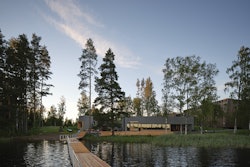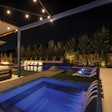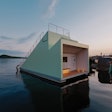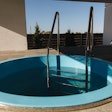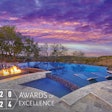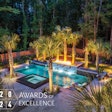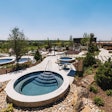
“It’s quite evident that the recent heat and lack of rainfall in many parts of the country have caused state, county and local governments to examine and adopt water use restrictions,” the association said in a release. “Most jurisdictions have established multi-level contingency plans for these conditions. Each level typically involves the prohibition or limiting of certain non-essential water consumption activities, such as washing cars at home, residential or public (i.e. golf course) lawn watering, and, in some cases, filling or refilling swimming pools.”
APSP believes that the industry is misunderstood and serves as an easy target for government officials. To combat this, the association released the following memo:
Under “exceptional” conditions (often categorized as Level III or IV), all non-essential water uses are subject to review and restriction. The goal, however, is to move pools and spas as far down the “list”’ as possible, to the point where they are only impacted under the worst (and extremely rare) conditions. Accomplishing this goal requires an energized and proactive membership, willing to engage and demonstrate to state or local officials:
1. That pools and spas are highly efficient and conservation friendly.
2. The minimal amount of water consumed by a properly designed and operating pool as compared to other activities such as lawn watering.
a. For example, the amount of water used in a backyard pool is typically no greater than the amount of water needed to tend to a similar sized patch of grass.
b. Using a properly covered and maintained 18’ x 36’ pool will use less than 5,000 gallons for a summer.
3. Further reduction in water use from pools and spas can be achieved through increased awareness and usage of vapor retardant covers, automatic pool cleaners and flow meters to detect possible leaks.
4. The risks associated with an under filled pool (if water levels cannot be maintained above the skimmer line) include circulation systems not properly functioning, thus creating the risk of stagnant water, possibly leading to recreational water illnesses and mosquito infestation, a potential breeding ground for “West Nile Virus”.
5.The impact such a ban has on local businesses, and, therefore, state tax revenue.
6. The fact pools can serve as reservoirs to first responders when fighting fires.
Here are the message points:
The APSP has tools to assist its members, including a document entitled Water Conservation Tips for Pool and Spa Users, which provides information on how to make the most of your pool and/or spa water. To ensure minimum water loss from pools and spas, the industry should educate its consumers and elected officials on the tips provided in this documentation. Some examples include:
Properly maintained spa water needs to be replaced only two or three times a year and can be reused for landscape watering when drained. In a pool, one filling lasts for decades and is only necessary when repairs require it.
Baths use water once, but a spa offers four to six months of use for the same water. Taking just five baths at normal tub size uses enough water to fill a typical 400-gallon spa.
A jetted or whirlpool bathtub used twice a week consumes 240 gallons. In just four months, these tubs use about the same amount of water as most pools use in an entire season.
A good spa or pool cover can reduce evaporation and water waste by 95 percent.
Spas manufactured in the last five years use new technology that keeps water clean much longer.
Here’s a success story based on this strategy:
In 2007-2008 our members in Georgia were facing drought restrictions that would significantly affect the swimming pool industry. Combating this in Georgia required a multi-pronged approach, unity of industry leadership, political arm-twisting, and strong relationships with various media outlets. It also required PR and lobbying help to guide through local media and political channels and adjust for the proper messaging. Most of all, as the GA chapter noted, it requires countless hours of volunteer time as well as putting forward funding to bring in experienced pros to do some of the heavy lifting. The multi-pronged approach required in-depth knowledge not only of all the various facets of the uses of water, but also the economic impact.
This was a year battle in Georgia, but it was a successful battle for the industry. In order to be successful a plan had to be developed and initial research completed – data included: # of pools per year, # of pools existing, # of employees affected industry-wide, approx. # of gallons used per year in the local pool industry, amount of water consumed daily by other local industries, local politicians with pools in their own backyard… the list goes on. APSP can assist any state in obtaining some of this data, but much of it will have to come from local distributors and manufacturers working together, sharing information, and being willing to work for the common good of saving the industry.
Please let us know what’s happening in your area and how we can help:
Let me know if your officials are considering severe water restrictions that may impact pools and spas. We can provide resources and connect you with other regions that have been successful at protecting recreational water usage. My email is [email protected].
Sincerely,
Jennifer Hatfield
Director, Government Affairs



























